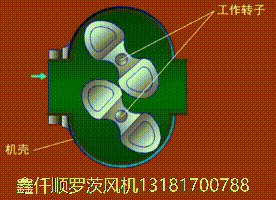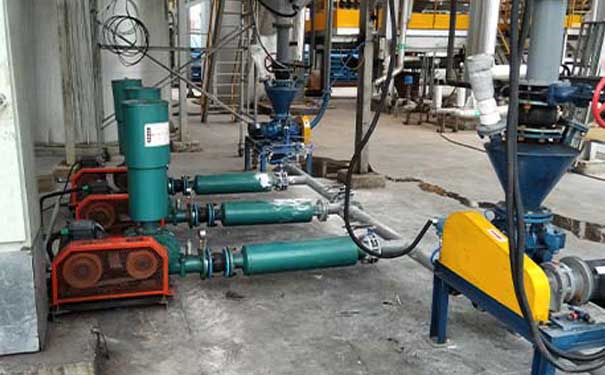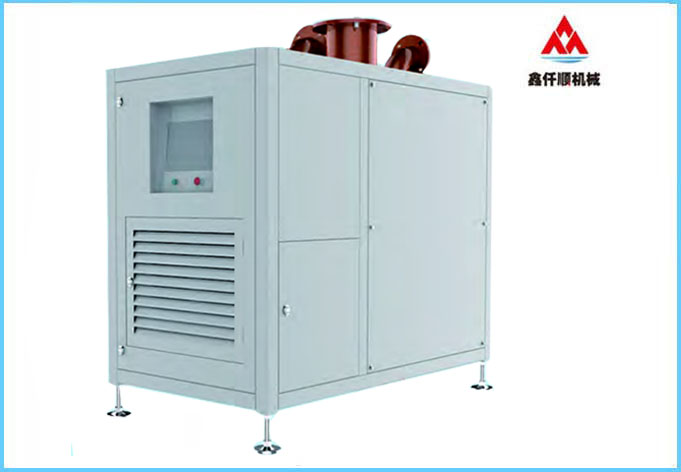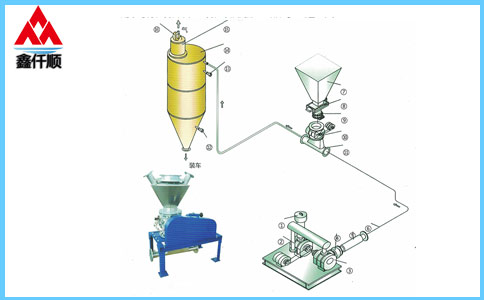Working principle of Roots blower Working principle diagram of SR three leaf Roots blower Gif animation
Source: Roots blower manufacturer
Released on: November 23, 2021
Hits:


The impeller is contaminated with impurities, resulting in too small clearance; Gear wear causes large backlash; The gear is not firmly fixed and cannot keep the impeller synchronized; The bearing wear causes the clearance to increase. Remove the dirt and check whether the internals are damaged; Adjust the gear clearance. If the gear backlash is greater than 30%~50% of the average value, replace the gear; Reassemble the gear and keep the taper fit contact area up to 75%; Replace the bearing;
Incorrect installation clearance; The operating pressure is too high, exceeding the specified value; The operating temperature is too high; The casing or base is deformed, and the fan positioning is invalid; The axial positioning of the bearing is poor. Readjust the clearance; Find out the cause of overload and reduce the pressure to the specified value; Check the installation accuracy and reduce the pipeline tension; Check and repair the bearing and ensure the clearance.

Related information
-
Introduction to working principle of Roots blower -
What is the working principle of stainless steel roots blower? -
What is the working principle of nickel plated Roots blower? -
Operating principle of oxidation roots blower -
What is the working principle of Roots blower? -
What is the working principle of Roots blower? -
What is the working principle of Roots blower? -
Working principle and characteristics of roots blower for pneumatic conveying -
What is the difference between the working principle and characteristics of pneumatic conveying roots blower and air compressor? -
The manufacturer of Roots blower will explain the working principle of Roots blower:
Xinqianshun's latest products
Random articles
-
Roots blower fault, cause analysis of overcurrent fault of roots blower -
What are the precautions for cleaning Roots blower? -
How to reduce aeration of Roots blower? -
(Common sense necessary for selection of Roots blower) Calculation method of Roots blower speed: -
Causes of Roots blower motor burnout -
How can Roots blower be maintained and have a longer service life? -
Basic Measures for Cooling Roots Blower in High Temperature Season -
Roots blower is also the core electromechanical equipment necessary for sewage treatment aeration tank -
Application of three blade roots blower in sewage aeration _ sewage aerator: -
How to solve the noise problem of roots blower?
Latest news articles
-
How to repair the surface defects of Roots blower impeller? -
How to remove the bearing of Roots blower? -
What principles should be followed in the maintenance of three leaf roots blower? -
How to handle the wrong lubricating oil for Roots blower? -
Performance characteristics and maintenance of Roots blower for aquaculture -
How to select appropriate Roots blower aerator for aeration in aquaculture? -
What principles should be followed in the maintenance of three leaf roots blower? -
Notes on installation of safety valve of three blade roots blower -
What are the causes of tripping of Roots blower frequency converter? -
Introduction to the Main Causes of Abrasion of Three blade Roots Blower Impeller








